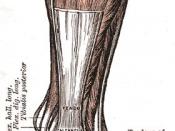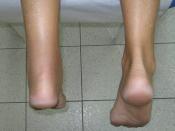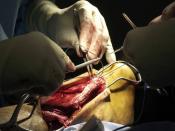Achilles Tendon Rupture
Being the largest tendon in the body, the Achilles tendon connects the gastrocnemius (calf muscle) to the calcaneus bone of the foot. Tendons are rather strong, but not very flexible. Now since its the largest tendon, you can imagine it can be easily injured and can be very painful.
When your gastrocnemius muscle contracts, the Achilles tendon is stretched upwards, forcing your toes down. This process is critical in some every day activities such as walking, running, going up stairs, and jumping. It is possible to walk on a ruptured Achilles tendon but can be extremely painful.
There are many obvious characteristics of a ruptured Achilles tendon. There always is some kind of acute ankle pain present. This includes difficulty walking, running, jumping, etc. Commonly there are sometimes bruises on the back of the ankle and tenderness. It's very common for an orthopedic to visually examine and palpate the back of the ankle to make the diagnosis.
This is most prefered and most widely practiced as the initial step in the diagnosis of the injury. A small depression on the back of the ankle will usually indicate the site of the injury (rupture). It's also been known for orthopedics to ask the patient to stand on their toes. Failure to do this concludes the Achilles is ruptured. A x-ray or MRI is not necessary but can confirm the severity of the injury. Some x-ray films of certain injuries actually yield peices of the calcaneus broken away from the bone that are still attached to the achilles tendon. Of course an MRI would show the achilles in detail including the site of rupture or tear.
When personally interviewing a former Achilles tendon rupture patient, I found many differences in the overall process. "John's" surgery was done in...


